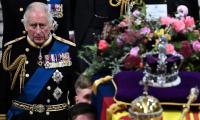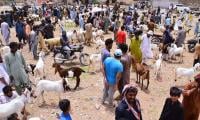It was a memorable evening on September 20 at the PNCA Auditorium, Islamabad. The PNCA and the Embassy of Japan had organised an event titled ‘NIHON Unplugged: Music from Japan and Pakistan’. The Trio Zipang – a Japanese band consisting of percussionist Ayumu Takanabe, Saxophone player Naomi Tabata and pianist Emi Kitagawa – enthralled the audience with their captivating performances. In addition to Japanese music, the trio concluded the evening by playing Dil dil Pakistan and Dama dam mast qalandar. The audience was ecstatic and the youth were swaying with rapture.
Looking at the faces of the audience and the thunderous applause they gave, we wondered if this was the same nation that has been attached with terrorism throughout the world. It was evident that the people of Pakistan – especially the youth – crave good music. It is not a coincidence that during the first 30 years of the country’s existence, it was much less violent than it is today. During the 1950s and the 1960s, bars and barmaids catered to people’s desires and music flowed in cabarets and clubs. There were more opportunities for the young people to intermingle and interact.
Then came the 1970s with an onslaught of the dark ages. Z A Bhutto was keen on converting parliament into an inquisition by deciding on the people’s faith. But PTV, under the leadership of Aslam Azhar, was a bastion of enlightenment. With the performances of Naheed Siddiqui on TV, people could have the delight of appreciating subtle movements.
With classical music of various gharanas on display, PTV brought a sense of art and culture within the confines of your home. By watching Hollywood classics shown in programmes such as Midweek Special and Weekend Cinema, you had the privilege of fine-tuning your love for cinema.
By the late 1970s, after the execution of Z A Bhutto, everything had changed for the worse. Art and culture were among the primary casualties. With religious zeal, General Zia and his coterie not only butchered democracy in the country but also the finer senses of the people to appreciate the nicer things in life.
Owing to a ban on dance and discussion, the youth was led into an abyss of jihad and terror. Almost all avenues for entertainment were blocked. But the road to perdition was open wide. The young generation growing up in the 1980s was fed on a state-sponsored narrative that blinded them to any intellectual discourse.
With art and culture stifled, almost non-existent sports facilities for the youth and minimal interaction with the opposite sex, the stage was set not for melody and music but for madness and murder. Millions of new youngsters who joined the idle lot every year had pent-up anger and unmet desires. In the absence of healthy outlets for the fulfilment of their emotional cravings, can you expect to nurture a peaceful young generation? This is not simply a question of narrative. Instead, this is a challenge of the entire cultural atmosphere that pervades in society.
A barren landscape for art and culture could not produce a cultured and civilised generation. Hatred begot hatred and violence spawned violence. It is surprising that in the 70 years of our existence, we could not even assemble a national orchestra. Nobody ever thought about setting up an opera house where international ensembles could come and perform. There was enough money to develop over 100 atomic bombs and there were also plenty of resources for missiles and submarines. But there was not enough moolah for music. And you wonder why have we become culturally bland and artistically blind?
Now, everybody is talking about a new narrative but nobody knows where it will come from. Even if a liberal and secular narrative based on harmony and tolerance is developed and disseminated, will there be many buyers without an enabling environment? There are serious doubts about whether this can happen.
Perhaps the answer lies in a dynamic art and culture scene that can attract people’s attention. Through a fraction of the money that is being spent on CPEC, we can have music schools and drama theatres in every district of Pakistan. And that will be a much more effective and produce significant change.
True, this will enrage the mullah mindset. But that is the point. Why do fundamentalists target art and culture? They know that the seeds of dissent sprout from there. Art and culture not only stimulate your mind but also enable you to appreciate other arts and cultures and that’s where the key of tolerance lies.
An appreciation of the arts and culture makes a people civilised and cultured and an absence of it creates an uncouth lot that maims and kills. A new narrative is important. But that will take 50 years to take root. By focusing on art and culture, we can hope to reap the fruit much earlier.
At the state level, just the assertion and reassertion of the ‘sacrifices’ made are making us a laughing stock. Our decision-makers have received enough money for their services and the ‘sacrifices’ they made the people offer. The world is not blind. The likes of the Milli Muslim League and the Tehreek-e-Labbaik Ya Rasool Allah are likely to throw us further into a ditch. They are the ones that will fight any change in the realm of art and culture. But if given a choice, the people will defend their right to art and culture. More than atomic bombs, we need to defend the right to entertain ourselves with art and culture.
The writer holds a PhD from the University of Birmingham, UK and works in Islamabad.
Email: Mnazir1964@yahoo.co.uk
People stand in line up as election officials check their ballot papers during voting general election at a polling...
Women show their voter identity cards as they stand in a queue before casting their votes in Agartala. — PTIThe 18th...
Former prime minister Imran Khan. — Instagram/ imrankhan.ptiAn old saying has it that “when you dance with the...
Kashmiris in Indian illegally occupied Kashmir protesting against the Indian occupation as the forces of India looked...
A representational image showing residents walking at a wholesale market in Karachi. — AFP/FileOnce again there is...
A representational image showing late Pakistani human rights activist and Supreme Court lawyer Asma Jahangir. —...







